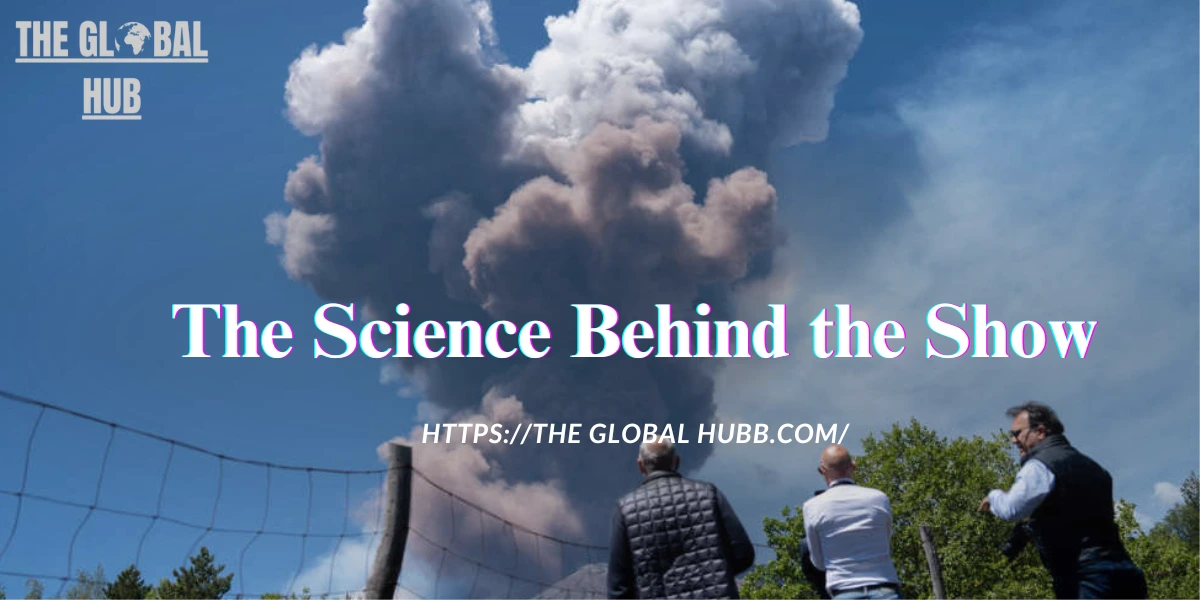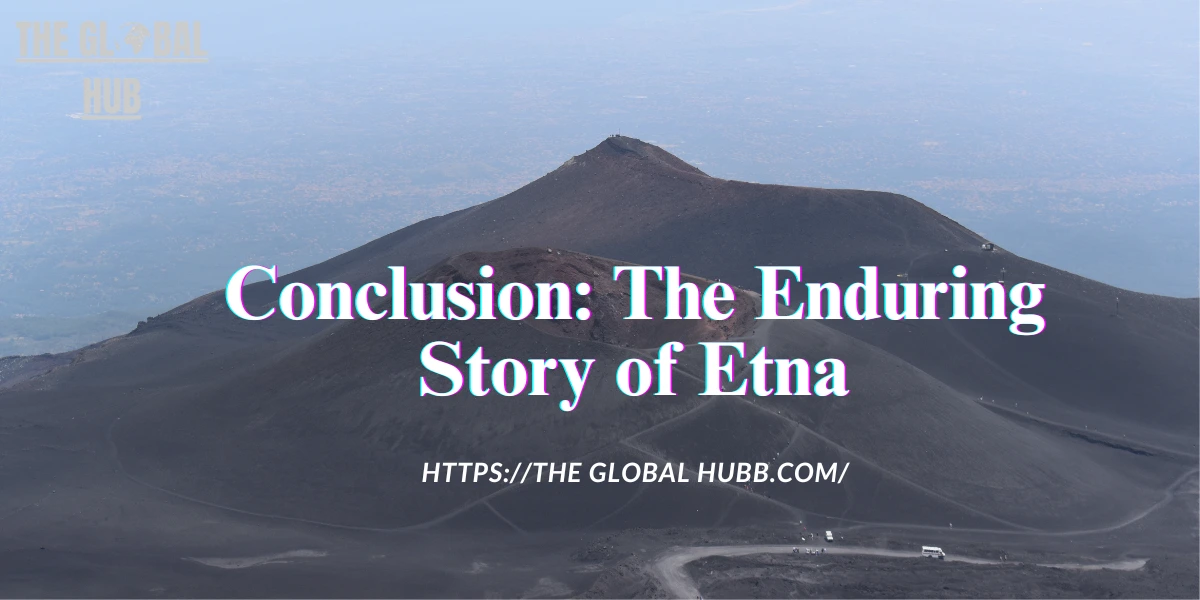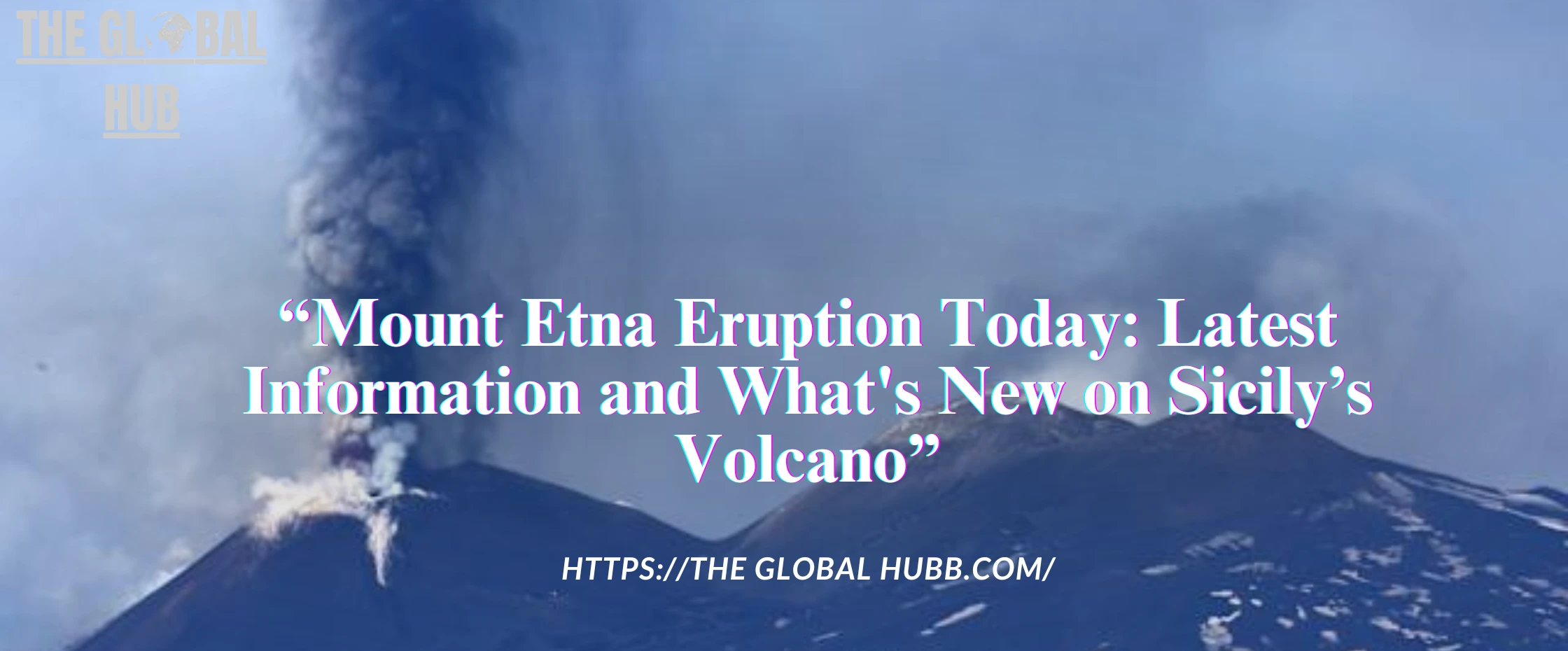Introduction: When the Volcano Awakens
Table of Contents
ToggleSicilians often dub Mount Etna as their ‘mamma’, ‘giant’, and ‘neighbour’, reflecting immense familiarity. This famous volcano has been an impactful part of the island’s daily life—sometimes serene, yet at other times thundering and always there. On June 2, 2025, Etna proved to all how much of an impact it could have.
As the sunrise arrived on Catania, people glimpsed a sky laced with ash accompanied by smoke rising from the Southeast Crater. The ground shook, and social media was flooded with videos of Sicily’s living mountain and its mesmerising glow of lava, and the world beheld the mountain’s majestic showcase once more.
The Eruption Unfolds: A Night of Fire and Ash

As is the case with many of Etna’s tales, the eruption story also began quietly. It all started with a thundering heartbeat as it once again ‘sang’ its powerful symphony. Similar to many mythological beasts, Etna keeps her secrets close and divulges them slowly.
Late on Sunday, Etna’s heart was racing, and the scientists from the National Institute of Geophysics and Volcanology had died while restlessly waiting to probe her. As the clock rang midnight, an audible thrum spread around Mount Etna, which thickened the atmosphere around her. Seismic monitors began alerting of tremors that sent shivers to every nerve at the volcano’s base.
At four in the morning, Etna’s Southeaster Crater erupted, blasting energy across the sky. Lava fountained up and cascaded down the side of the mountain with gouts of orange. Ash and gas would boil upward into a plume that towered over the mountains and island of Sicily. The eruption was outwardly gorgeous but also nerve-racking – it was a reminder that nature particularly has supremacy.
The tourists who had ascended to the mountain to watch the sunrise were now moving back downstairs while covering their faces with scarves to keep the harsh wind away. Locals from towns and villages along those tracks were keeping their doors open to witness the event, some looking horrified, but most filled with admiration. The reason why they were looking with admiration was because, for most, this would not have been their first eruption – and they exactly knew it wouldn’t be the last, regardless.
Life Under Etna’s Shadow: Perspectives from Sicily
Turning Zafferana into a town that encourages volcanic pride, its teachers explain how growing up with Mount Etna and its surroundings makes one reach a state of equilibrium between gratitude and reverence towards the volcano. “We grow up learning that Etna is part of us. She gives us rich soil for our vineyards and lemons, but we always respect her moods.”
It’s especially relevant for those living near Mt Etna since cars barely get any sleep from the debris raining down from the sky. During the eruptions, the entire lap around the volcano was transformed into a carriage to a soft world void of color. Windows “decorated” with volcanic ash create a serene yet eerie beauty. “It’s not fear,” says Giovanni, a local Winemaker, “It’s respect. Etna reminds us that we are guests on her land.”
The Science Behind the Show

Show comes in the shape of science, and Catania has yet another burst of beauty working with the mountain, so it is though, put into other words, scientists help each other fellow winemakers learn about stratovolcanoes so they can achieve a greater goal of shaping human civilization. It’s fueled by the friction of many layers of lava and ash of the African and Eurasian tectonic plates slowly dancing far under Sicily. As the plates converge, magma moves closer toward the surface. At times, it seeps out slowly and quietly, resulting in the formation of new land. Other times, it can burst out in dramatic explosions like what we saw on June 2. In the current eruption, Etna displayed what volcanologists call “Strombolian activity”, which is short, powerful bursts of lava and gas, often described as fireworks for nature.
Because of the network of sensors, satellites, and drones, the scientists are now able to predict most of Etna’s movements. A few hours prior to this eruption, Etna experienced some gas tremors and some changes in gas emissions shifting pace, allowing experts to alert local authorities and keep everyone out of harm’s way.
Myths, Memory, and Survival
Etna is widely known for its deadly eruptions throughout the history of Sicily. Ancient Greeks believed the volcano was the forge of Hephaestus, god of fire, and the palace of the monstrous Typhon. Over the years, Etna has shaped the land, destroying an untold number of villages as well as inspiring an endless number of legends. In 1669, Etna’s eruption was the deadliest of all time as lava flowed toward Catania, far surpassing its city walls and engulfing settlements. During the 1992 and 2001 eruptions, much more progress was made when local personality and modern technology came together to face the challenge head-on.
Currently, Etna is a UNESCO World Heritage Site, marking the symbol of the indomitable power of Sicily. Even as her slopes continue to bear witness to intertwining tales of towns, orchards, and vineyards, the beautifully tragic love story with the relentless mountain thrived on.
- The Human Side of Disaster: How Sicilian People Adapt
Life for Sicilians turns both delightful and demanding with working the volcanic soil. Infamously fertile, Etna’s soil stands as the source of award-winning wine, olives, and citrus fruit. In addition, friends from every corner of the world come laden with tourism, wishing to experience the blazing slopes and cuisine.
On the other hand, when an eruption occurs, everything shifts poleward. Actions as easy as going to school or for work become completely impossible; aero planes take on a new route around the island while passengers within are trapped due to ash clouds.
In the midst of the disruptions, there is a feeling of harmony and collaboration. Plans for emergencies are practice routines, and people assist one another in cleanup while keeping each other up to date. As Lucia, a Nicolosi nurse, puts it, “We know what to do. We follow the scientists, help our neighbors, and then we wait for Etna to calm down.”
- Tourism and Wonder: Visiting Etna Safely
Tourists flock even when Mount Etna is in the eruption stage. During moderate-sized eruptions, visitors are transported via cable cars and multi-terrain vehicles for picturesque views of the Mediterranean. There are also local guides available who share part of the volcano’s history along with its eruptive science.
Active periods of the mountain also pose high dangers. These include the closure of regions above 2900 meters, during which offices give constant reports. They also educate certified guides on the indicators for a caution zone. Certified guides are trained on a lot of the identifiers to look for to ensure groups do not enter dangerous areas.
For those unable to visit the attractions physically, action feeds and news channels relay streams live. Glowing lava pouring into the night sky is an image everlasting— a stark reminder of the complexities and stunning elements of nature.
The Global Effect: Science, Air Travel, and Climate Change

Etna’s eruptions affect Sicily, Europe, and the rest of the world. The ash cloud from the Catania eruption in June of 2025 made aviation authorities issue an orange alert telling pilots to steer clear of that area. As a major airport for the southern regions of Italy, Catania airport postponed multiple flights and checked for ash on the runways.
Scientists all over the world are studying Etna’s eruptions so they can learn how volcanoes work. The information gathered here helps other volcanoes around the world, from Indonesia to Central America, improve their early warning systems. Etna, with all his fury, is constantly showing us how to coexist with the volcanic wonders of our planet.
Some research studies are also exploring the effect of volcanic eruptions on the Earth’s climate. Massive eruptions can expel ash and gas, sometimes cooling the planet for a long time. Even though smaller Stefano eruptions don’t greatly influence the planet, they help us understand many of the world’s systems.
Etna’s Explosive History: What We’ve Learnt So Far
Destruction is one part of “the story of Etna”, whereas renewal is the other part. The 1669 eruption “added” volatile creation or destruction while the new communities, coupled with the eruption, piece by piece transformed the underlying foundation of society. Onwards to the 1992 eruption, which required collaborative efforts to explode earth barriers to Zafferama town, which was on the course of the lava flow.
Residents are trying to adapt to persisting eruptions. Living in fortified homes and carefully building farms within fortified perimeters finally got Sicilian natives to cope with day-to-day living plans as well as emergency contingencies built into plans.
Living Upstairs: Inactive Volcano, Daily Life and The Will to Endure
For Sicilians, Etna remains the heart of life. Families built emergency shelters and kits while children are promptly educated on the range of functions provided by the volcano. It regulates everything from their planting calendar for farmers to giving distinct flavors to wines grown in volcanic soil.
These people feel a strong, palpable bond to the land and each other. Salvatore, one of the town’s chefs, said, ‘We are Etna. We live with the volcano, and we wouldn’t trade it for anywhere else.”
The Future of Etna: What Comes Next?

Everyone, both locals and scientists, are eager to watch and wait as the June 2025 eruption unfolds. The volcano could quiet down in days, but it could also enter a longer phase of activity. One thing everyone can agree on is that Etna will remain a part of Sicily’s majestic tale.
Safety for citizens remains a top concern for scientists, so many are focusing their attention on the mountain in an attempt to find new methods to predict eruptions. Response time is becoming much more manageable with modern technology such as drones, satellites and real-time data sharing.
The range of climate change is yet another concerning factor to be taken into consideration. Shifting focus on the volcano and how changing weather patterns could impact ash dispersal, rain and even the mountain’s slope stability is a top priority for scientists who are ready to adapt as needed.
Guidelines for Safety for Residents and Visitors

When it comes to experiencing Sicily, being aware of what you can do around the volcano Etna is a must. Constantly refresh yourself with proper updates from local authorities such as INGV.
Make sure to always wear protective masks, scarves, and strong shoes when travelling on the road; it is a must to wear a mask to protect from ash particles in the air. Carry water as aid for hydration, obey emergency personnel, and assist when possible.
Responsible tourism is a great way to preserve Etna, making sure that there are no mishaps or dangers to all the people around. Tourists must encourage the locals as much as they can, which boosts local businesses.
All Aspects of Etna – Imagination, Culture, Art
Mount Etna showcases unparalleled artistic creativity throughout centuries as it acts as a signature piece of danger and beauty in the world. Captured through film and myth, it celebrates all parts of Of Sicily. Folk songs and local festivals represent and celebrate the unrivalled Sicilian culture.
Poets document her moods and mysteries while painters capture her changing hues. Even the region’s food and wine have bold and complex flavors that evoke Sicily’s great volcano.
To many, Etna is far more than a mountain: a muse, a guardian, and a reminder of omnipresent forces in our world.
Conclusion: The Enduring Story of Etna

Mount Etna continues to inspire and challenge as the latest eruptions unfold. For the people of Sicily, she is a restive neighbor to respect, a source of pride, and a part of their identity. Etna’s sheer power stands as a reminder of the planet’s restlessness, unending change, and the resilience required.
No matter how far you are watching from or standing on her slopes, one thing is clear: the story of Etna is far from finished. Each eruption unfurls another chapter in a historical saga that stretches for centuries and will unfold for decades to come.
Stay safe, stay curious, and remember—you are witnessing the living heart of Sicily.
Related Articles and Live Coverage
- Mount Etna eruption live: Huge volcanic blast in Italy sends tourists fleeing – The Independent
- Italy’s Mount Etna volcano erupts with a massive ash cloud and a “lava fountain” – CBS News
- Mount Etna erupts with huge plume of ash; tourists seek safety – USA Today
- Italy’s Mt. Etna erupts, sending huge plume of ash and rock into air – CNN
- Mount Etna erupts in Sicily, forcing tourists to flee as volcanic ash and tremors intensify – AccuWeather
- Watch: Italy’s Mount Etna Volcano Erupts With Ash And Lava, Sends Tourists Running For Safety – NDTV
- Mount Etna Erupting NOW! Watch the Volcanic Activity Unfold (June 2, 2025) – YouTube
- Why is Mount Etna so famous, when was its last eruption, and how active is it? – Economic Times
- Mount Etna – Wikipedia
For the latest bulletins, visit the INGV Osservatorio Etneo. If you’re planning a visit, check local news and follow all safety advice. The mountain will be waiting—just as it always has.

